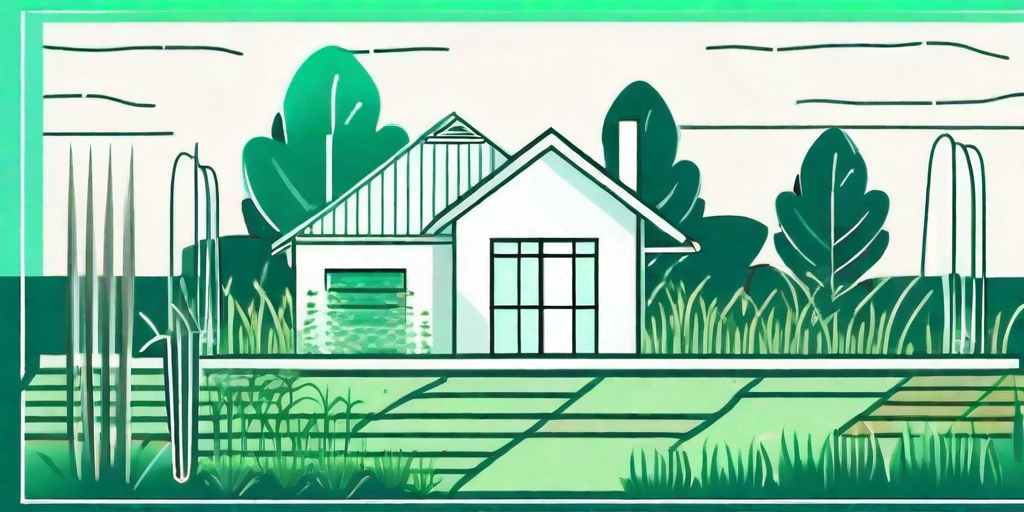
If you've ever found yourself humming "Rice, Rice, Baby" while cooking dinner, then this guide is for you. Growing your own rice at home is not only a fun and rewarding hobby, but it's also a great way to ensure that you always have a fresh supply of this staple food. Plus, it's a fantastic conversation starter at parties. "Oh, this rice? I grew it myself."
Why Grow Your Own Rice?
Before we dive into the nitty-gritty of rice cultivation, let's first explore why you might want to grow your own rice. For starters, it's a great way to connect with nature and learn about the fascinating process of plant growth. Plus, it's a surprisingly easy crop to grow, making it perfect for beginners.
Secondly, growing your own rice allows you to control what goes into your food. You can choose to grow organic rice, free from pesticides and other harmful chemicals. This can be a great option for those with dietary restrictions or health concerns.
Finally, let's not forget the satisfaction that comes from harvesting your own crop. There's something incredibly rewarding about enjoying a meal made from ingredients you've grown yourself. Plus, it's sure to impress your friends and family!
Getting Started: Choosing Your Rice Variety
Now that we've covered the why, let's move onto the how. The first step in growing your own rice is choosing the right variety. There are over 40,000 types of rice in the world, so you're spoiled for choice!
Some popular varieties for home growers include Jasmine, Basmati, and Arborio. These varieties are known for their distinctive flavors and are commonly used in a variety of dishes. If you're feeling adventurous, you could even try growing a colored variety like black or red rice.
When choosing your rice variety, consider your local climate and growing conditions. Some varieties are better suited to certain climates than others. For example, Jasmine rice prefers a tropical climate, while Basmati rice can tolerate cooler temperatures.
Planting Your Rice
Step 1: Preparing the Seeds
Once you've chosen your rice variety, it's time to prepare your seeds. This involves soaking the seeds in water for 24 hours, then allowing them to dry out for another 24 hours. This process helps to stimulate germination.
After your seeds have been soaked and dried, they're ready to be planted. You can plant your seeds directly in the ground, or you can start them off in a seed tray and transplant them later.
Step 2: Choosing the Right Location
Rice plants love the sun, so choose a location that gets plenty of sunlight throughout the day. They also prefer a slightly acidic soil, so you may need to amend your soil with sulfur or aluminum sulfate to lower its pH.
Rice plants also require a lot of water, so make sure your chosen location has good drainage. A flooded rice paddy is a happy rice paddy!
Step 3: Planting the Seeds
When planting your seeds, space them about 6 inches apart to allow room for growth. Plant the seeds about 1 inch deep in the soil.
After planting, water the area thoroughly. You want the soil to be wet, but not waterlogged. If you're growing your rice in a paddy, you can fill it with about 2 inches of water.
Caring for Your Rice Plants
Once your seeds are planted, it's time to sit back and watch them grow. But don't get too comfortable – your rice plants will need some care and attention along the way.
Rice plants need a lot of water, so make sure to keep the soil or paddy consistently wet. However, be careful not to overwater, as this can cause the roots to rot.
As your plants grow, they may need some additional nutrients. A balanced fertilizer can provide your plants with the nutrients they need to thrive. Apply the fertilizer according to the package instructions.
Harvesting Your Rice
After months of care and attention, it's finally time to harvest your rice. This is typically done in the fall, when the grains have turned from green to golden brown.
To harvest, simply cut the stalks and let them dry in a warm, dry place for a few weeks. Once dry, you can thresh the grains by hand or with a machine.
After threshing, you'll need to remove the husks from the grains. This can be done by hand, or with a rice huller. Once the husks are removed, you're left with delicious, home-grown rice ready to be cooked and enjoyed!
Frequently Asked Questions
Can I grow rice in any climate?
While rice prefers a warm, tropical climate, many varieties can be grown in cooler climates. Just make sure to choose a variety that's suited to your local conditions.
How long does it take to grow rice?
From planting to harvest, it typically takes about 4-5 months to grow rice.
Can I grow rice indoors?
Yes, rice can be grown indoors in a container. Just make sure to provide it with plenty of sunlight and water.
Conclusion
So there you have it – a comprehensive guide to growing your own rice at home. With a little bit of patience and care, you can enjoy the satisfaction of harvesting your own crop. So why not give it a try? You might just find that home-grown rice tastes that much better. And remember, when it comes to rice cultivation, it's all about the journey, not the destination. Happy growing!











